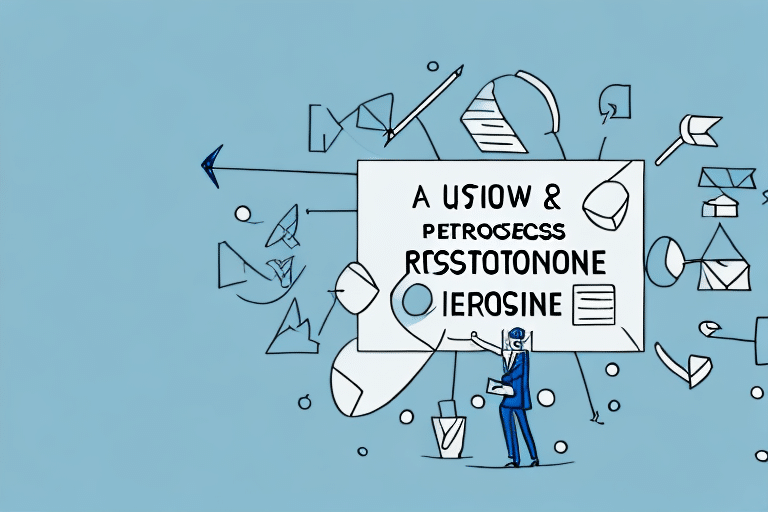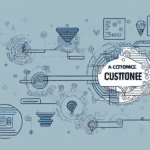Introduction to Customer Retention
Customer retention is the cornerstone of sustained growth in any business. While attracting new customers remains important, retaining existing ones is crucial for long-term success. This comprehensive case study delves into the significance of customer retention, explores the customer lifecycle, outlines key metrics for measuring retention, and presents strategies to enhance customer experience and satisfaction. Additionally, it examines the role of personalization, effective communication, loyalty programs, data analytics, proactive customer service, and best practices for building enduring customer relationships. Finally, we assess the impact of investing in customer retention on business growth.
The Importance of Customer Retention in Business Growth
Customer retention is a primary driver of business growth. According to Harvard Business Review, increasing customer retention rates by just 5% can boost profits by 25% to 95%. Investing in customer retention leads to a steady flow of repeat business, enhanced customer loyalty, and positive word-of-mouth referrals. Conversely, poor retention can result in decreased revenue, high customer acquisition costs, and reduced market share. In today’s competitive landscape, maintaining a loyal customer base is essential for sustainable growth and success.
Impact on Profitability
Retained customers tend to spend more over time and are more likely to try new products or services. They also serve as brand ambassadors, attracting new customers through positive reviews and referrals.
Cost Efficiency
Acquiring new customers often costs five to seven times more than retaining existing ones. Focusing on retention reduces marketing and sales expenses significantly.
Understanding the Customer Lifecycle: From Acquisition to Retention
The customer lifecycle encompasses the journey from initial awareness of a product or service to making a purchase, experiencing the post-purchase phase, and ultimately achieving retention. The stages include awareness, consideration, decision, purchase, post-purchase experience, and retention.
Stages of the Customer Lifecycle
- Awareness: Potential customers become aware of your product or service.
- Consideration: Customers evaluate your offerings against competitors.
- Decision: Customers decide whether to make a purchase.
- Purchase: The transaction occurs.
- Post-Purchase Experience: Customers use the product or service and provide feedback.
- Retention: Efforts are made to keep customers engaged and loyal.
Customer Needs and Preferences
Understanding customer needs and preferences at each stage allows businesses to tailor their marketing and sales efforts effectively, leading to increased satisfaction and loyalty.
Role of Customer Feedback
Soliciting feedback at various lifecycle stages provides insights into what’s working and what needs improvement, enabling businesses to enhance the customer experience and boost retention.
Identifying Key Metrics for Measuring Customer Retention
Tracking customer retention metrics is vital for assessing business health and success. Key metrics include Customer Lifetime Value (CLTV), churn rate, repeat purchase rate, and customer satisfaction.
Customer Lifetime Value (CLTV)
CLTV measures the total revenue a business can expect from a single customer over their entire relationship. Higher CLTV indicates strong retention and customer loyalty.
Churn Rate
Churn rate represents the percentage of customers who cease using a product or service within a given timeframe. A high churn rate signals retention issues that need addressing.
Repeat Purchase Rate
This metric tracks the percentage of customers who make multiple purchases. A higher rate suggests effective retention strategies and customer satisfaction.
Customer Satisfaction
Customer satisfaction is measured through surveys and feedback forms, reflecting how pleased customers are with their experiences. High satisfaction levels correlate with better retention.
Strategies for Improving Customer Experience and Satisfaction
Enhancing customer experience and satisfaction is crucial for boosting retention. Key strategies include investing in customer service, leveraging feedback, personalizing interactions, delivering high-quality products, and maintaining a positive brand image.
Exceptional Customer Service
Providing outstanding customer service ensures that customers feel valued and supported. This involves training employees to be friendly, responsive, and knowledgeable, as well as promptly addressing any concerns or complaints.
Personalized Experiences
Tailoring interactions and offers to individual customer preferences enhances the overall experience, making customers feel understood and appreciated.
Multiple Support Channels
Offering diverse support options such as phone, email, live chat, and social media allows customers to reach out in their preferred way, improving accessibility and convenience.
The Role of Personalization in Customer Retention
Personalization is a pivotal component of customer retention. By customizing interactions and offers based on individual customer data, businesses can build stronger, more meaningful relationships.
Benefits of Personalization
- Increased Loyalty: Personalized experiences make customers feel valued, fostering loyalty.
- Higher Engagement: Customized content and offers lead to greater customer engagement.
- Competitive Advantage: Personalization differentiates your brand in a crowded market.
Implementation Techniques
Employ strategies such as personalized emails, product recommendations, and customized content to enhance the customer experience.
Building Relationships through Effective Communication and Engagement
Effective communication and engagement are essential for nurturing strong customer relationships. Regular, meaningful interactions keep customers informed, engaged, and connected to your brand.
Active Listening
Listening to customer feedback and responding appropriately demonstrates that you value their opinions and are committed to meeting their needs.
Consistent Updates
Keeping customers informed about new products, services, and updates maintains their interest and encourages ongoing engagement.
Utilizing Multiple Channels
Engage customers through various channels such as email newsletters, social media, and personalized messages to maintain consistent communication.
Creating Loyalty Programs that Encourage Repeat Purchases
Loyalty programs are effective tools for incentivizing repeat business and fostering long-term customer relationships. By offering rewards, discounts, and exclusive benefits, businesses can encourage customers to stay loyal.
Designing Effective Programs
Ensure that loyalty programs offer meaningful rewards that resonate with your target audience. Tailor rewards to different customer segments to maximize appeal.
Ease of Use
Design loyalty programs that are easy to understand and participate in, allowing customers to effortlessly track and redeem their rewards.
Multiple Reward Tiers
Implementing multiple tiers of rewards can motivate customers to increase their engagement and purchases to reach higher levels of benefits.
Leveraging Data Analytics to Identify and Address Customer Churn
Data analytics plays a crucial role in understanding customer behavior and identifying potential churn. By analyzing data related to purchases, preferences, and interactions, businesses can predict and mitigate churn proactively.
Identifying Churn Indicators
Use analytics to detect patterns and behaviors that precede customer churn, such as decreased engagement or fewer purchases.
Developing Retention Strategies
Based on data insights, create targeted strategies to address the specific reasons why customers may leave, thereby improving retention rates.
Implementing Proactive Customer Service to Boost Retention Rates
Proactive customer service involves anticipating customer needs and addressing potential issues before they escalate. This approach enhances the customer experience and fosters loyalty.
Anticipating Needs
Use customer data to predict and meet needs before customers even realize them, such as suggesting relevant products or providing timely support.
Regular Check-Ins
Conduct regular follow-ups with customers to ensure they are satisfied and to address any concerns promptly.
Utilizing Technology
Employ tools like chatbots and automated emails to maintain proactive communication and provide immediate assistance.
Case Study: How Company X Increased Their Customer Retention by 25%
Company X successfully boosted their customer retention rates by 25% through a combination of personalized communications, targeted marketing efforts, and the implementation of a comprehensive loyalty program. By prioritizing the customer experience and delivering exceptional service, Company X fostered lasting relationships with their customers, driving significant growth and success.
Overcoming Common Challenges in Customer Retention
Businesses often face challenges in maintaining high customer retention rates, including changing customer preferences, increased competition, and evolving market trends. Addressing these challenges requires a strategic approach and continuous adaptation.
Adapting to Changing Preferences
Stay attuned to shifts in customer needs and preferences by regularly collecting and analyzing feedback. Adapt your offerings to meet these evolving requirements.
Managing Increased Competition
Differentiating your brand through unique value propositions and exceptional customer experiences helps mitigate the impact of heightened competition.
Responding to Market Trends
Monitor market trends and industry developments to anticipate changes and adjust your strategies accordingly, ensuring you remain relevant and appealing to customers.
Best Practices for Sustaining Long-Term Customer Relationships
Maintaining long-term customer relationships involves a combination of strategic initiatives and consistent efforts. Implementing best practices ensures sustained loyalty and ongoing customer engagement.
Invest in Exceptional Customer Service
Prioritize customer service excellence by training staff, streamlining support processes, and ensuring timely resolution of issues.
Provide Personalized Experiences
Utilize customer data to deliver tailored experiences that cater to individual preferences and needs.
Leverage Data Analytics
Continuously analyze customer data to stay ahead of trends, identify opportunities, and make informed decisions that enhance retention.
Offer Value-Added Services
Introduce additional services or products that provide extra value to customers, strengthening their relationship with your brand.
Build a Positive Brand Image
Promote a strong, positive brand image through consistent marketing efforts, quality offerings, and ethical business practices.
Continuously Monitor and Improve
Regularly assess the customer experience and implement improvements based on feedback and performance metrics.
Conclusion: Why Investing in Customer Retention is Critical for Business Success
Customer retention is integral to achieving sustainable growth and success in any business. By investing in retention strategies, companies can drive repeat business, cultivate customer loyalty, and establish a strong foundation for long-term prosperity. From enhancing the customer experience to implementing personalized loyalty programs, prioritizing customer retention enables businesses to build lasting relationships and secure a competitive edge in the market.




















